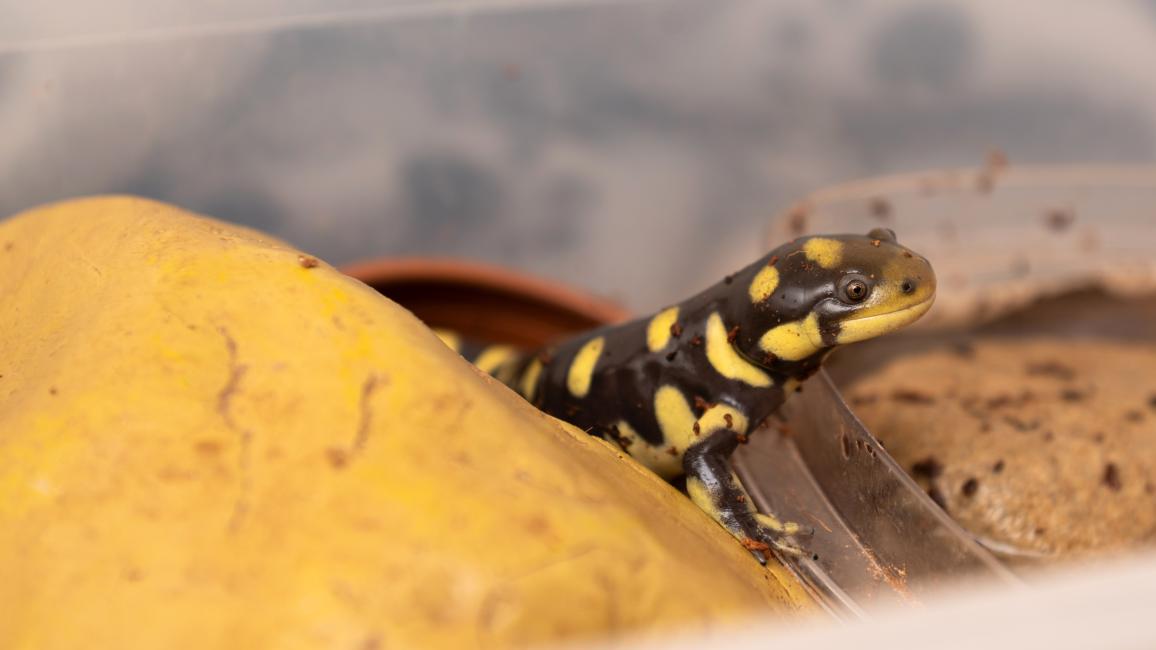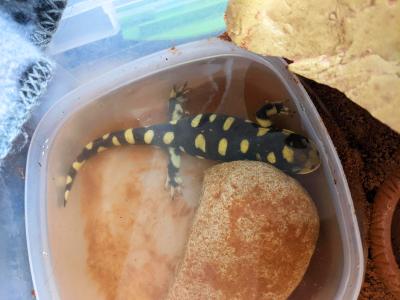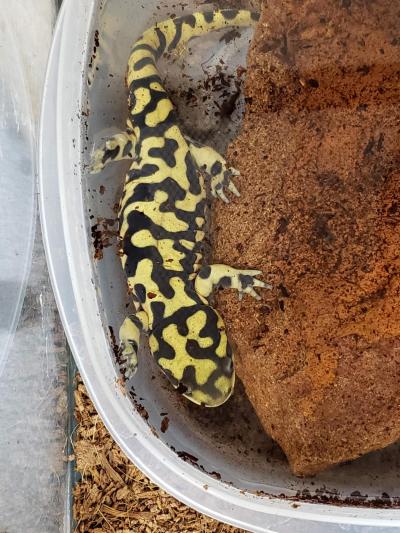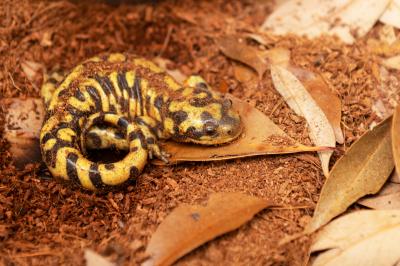Wild surprises in the garage

It was already a bit of a chaotic day at Wild Friends, the state and federally licensed wildlife rehabilitation area of Best Friends Animal Sanctuary. It had been snowing since early morning, the power was out, and the generator wasn’t working. But when a lethargic little salamander arrived, caregivers sprang into action.
It was on this November day that a family on the outskirts of Kanab, Utah, found the salamander in cold water in their garage. Salamanders are amphibians (similar to frogs and toads), meaning they are cold-blooded vertebrates who live part of their lives in the water and part on land.
[5 remarkable reptiles at Best Friends Animal Sanctuary]
Tiger salamanders are native to Utah, and when the weather gets cold, they brumate — similar to how warm-blooded animals hibernate. But a cold garage is no place for a salamander to do that. Corinne Blossfeld, Best Friends licensed wildlife rehabilitator, explains, “Reptiles and amphibians need to dig down into the environment to find adequate protection and temperature, and a cement floor cannot allow that.”
The people who found the salamander first thought about simply releasing her, but then they noticed that she didn’t seem to be feeling too well. And the snow and cold in the forecast likely wouldn’t help. So they drove the little creature to Wild Friends to get help.

Reviving a lethargic salamander
No one knew for how long the salamander had been in the garage, and she was very inactive (they also can’t tell whether she is a female — it’s only a guess). Corinne attended to her with a physical exam and then set up a place for her to recuperate. The fact that the power was out at the time didn’t put the salamander in further danger, even though she needed to be warmed up. Corinne says, “It’s important that you heat slowly, the same as people. (If) you are out in the snow without gloves you wouldn’t immediately run (your hands) under hot water because it can be painful.”
By the time the power came on again, the salamander had acclimated to room temperature and Corinne could add heat to the recovery enclosure. The salamander remained lethargic and didn’t move around, eat, or dig.
[Rehabilitating a mystery turtle]
Her caregivers kept a close eye on her, attentive to whatever she might need. There was the possibility that she had absorbed a harmful substance through her skin, so they frequently changed her water for the first few days to help with detoxing.
The little salamander tended to be quiet and shy, and she didn’t have much of an appetite at first. She usually hid in her small rock cave for most of the day, becoming more active at night. But over the next few weeks, she gradually perked up quite a bit and took more interest in her surroundings. Her appetite improved, too.

Another garage surprise
A month later, in another nearby town, another family found a surprise in their garage. This time, a woman went out with her teenage daughter to do chores, and when they picked up a bucket they found someone inside: a salamander.
The family didn’t know how long the salamander had been in the bucket, unable to climb out, but he was cold and lethargic. They were already familiar with Wild Friends, so they immediately hopped in their car to drive the hour or so to the Sanctuary.
Caregivers went right to work. And now, a couple of months later, he’s practically a brand-new salamander. He’s very energetic. His food, mostly mealworms and crickets, is always gone. He’s gained a bit of weight. And he even looks as if he has a smile on his face.

Looking forward to spring
Finding cold-blooded animals in need of help in the winter can be tricky, but these two got just what they needed because of the kind people who found them. And while a garage is no place for wild salamanders, their presence in the area is a good sign of a healthy ecosystem.
As soon as the ground is no longer frozen, Wild Friends caregivers will release them near a good-sized body of water. Until then, they will be warm and well cared for at the Sanctuary.
Support our wild friends
You can join Best Friends in caring for many species of animals (including wildlife like salamanders) by becoming a member.
Read more
Helping a baby cottontail get back on the bunny trail
Birds, bunnies and snakes, oh my: 8 wild animal rescue stories